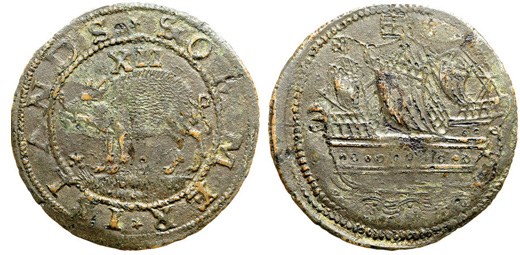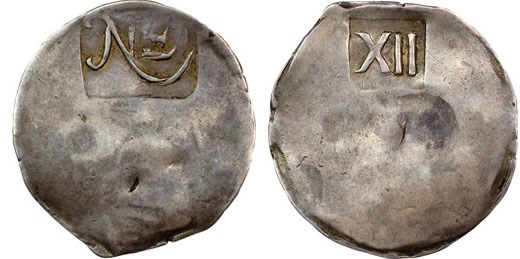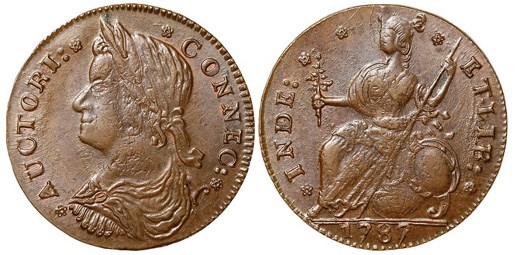
Colonial coins offer a combination of rarity, historical value and affordability
By Jeff Garrett for Numismatic Guaranty Corporation (NGC) ……
My last article mentioned my first trip to the ANA Summer Seminar in 1974. My instructor that week was “Red Book” editor Ken Bressett. I had decided to take his class on United States Colonial coinage. This was a subject that I knew very little or nothing about. Ken did a great job explaining this somewhat complicated area of the market.
Many people make no attempt to collect Colonial coinage because they do not understand them. This is a mistake, because United States Colonial coinage is fascinating and represents an excellent value. Very few coins offer such an incredible combination of rarity, historical value and affordability. There are many mega-rarities in the Colonial series, but there are dozens of issues that can be purchased for under $1,000.
As was the case over 40 years ago, Ken Bressett is still the best instructor for this fascinating area of the market. Ken is the senior editor for A Guide Book of United States Coins (the “Red Book”). In my opinion, this classic book is the best guide for anyone getting started with Colonial coinage. Over the years, Ken and the Red Book team have continuously improved the editorial content. They have expanded and improved the Colonial section greatly. Most people who buy the Red Book do not realize the incredible information this book contains. The section on early United States coinage is probably the best part of the whole thing.
In recent years, several pages have been added to the Colonial section discussing foreign coins in the Colonies. Most people don’t realize that foreign coins were considered legal tender in America until 1857. Evidence of this is easily proven by the large amounts of this material found in shipwrecks that have been discovered. An abundant number of foreign coins were found in the treasure of SS Central America. This section of the book has listings for the following coins that traded heavily in day-to-day commerce in the early years of our nation:
- Spanish-American Coinage of the New World (Cob and Pillar types)
- Netherlands “Lion Dollars”
- French Silver Coinage
- British Silver Coinage

All images courtesy NGC
Sommer Islands Shilling
The Red Book coverage of United States Colonial coinage starts with the Sommer Islands (Bermuda) coinage. These coins are the first struck for the English colonies in the New World and were issued about 1616. The coins were made of brass or copper and lightly silvered. A hog is the main device and they were known as Hogge Money or Hoggies. The Bermuda Islands were named for Juan de Bermudez, who is believed to have shipwrecked there in 1515. He left behind a few hogs, and a hundred years later the island was overrun with the animals.
Most Sommer Islands coins found today are low quality and seldom seen. These coins are among the rarest and priciest Colonial coins. As mentioned before, the amazing history of these pieces is what makes them special.

New England Shilling
The 1652 New England coinage is covered next in great detail. The series starts with the amazingly simple NE Threepence, NE Sixpence and NE Shilling. The latter coin is a great illustration of why there has never been a better time to buy Colonial coins.
For decades, there have been a relatively small group of devoted collectors of Colonial coinage. These individuals amassed amazing collections of Colonials. They competed with each other when great collections were sold and prices remained lofty when they butted heads at auction. In the last 10 years or so, several of these collectors have died or decided to sell their lifetime holdings. These include such famous names as Ford, Newman, Partrick and several others. The market could not absorb this much material and prices have fallen on most issues. Nice examples of the famous 1652 NE shilling dropped from about $400,000 USD to under $300,000.
A few years ago Heritage Auctions began selling the Donald G. Partrick collection of Colonial coinage. This collection is one of the finest ever assembled and includes the well-known Brasher doubloon. After the first installment, Mr. Partrick decided to withdraw his consignment and wait for a better market. Savvy collectors and investors should consider this amazing buying opportunity. When the coins from all of these auctions are fully absorbed by the market, finding important United States colonials will become a much more difficult task.

1787 Connecticut Copper
There are many ways to collect Colonial coins. Some with deep pockets and great ambition use the Red Book as their guide and purchase as many as possible. Others concentrate on issues of interest. Several states are represented in the Colonial series including New York, Connecticut, New Jersey and Vermont. The possibilities are endless. You can still attend an ANA Summer Seminar on Colonial coinage. This would be a great way to start your numismatic journey collecting Colonial coinage. It would also be a great idea to seek the advice of an expert in the field. They could share their many years’ of experience and help you source material. There is also a Colonial Coin Collectors Club that you could join once your interest in the field develops.
Colonial coins may not be the easiest coins to collect, but the potential rewards justify the efforts.
* * *
Questions about the rare coin market? Send them to [email protected].




